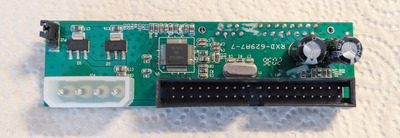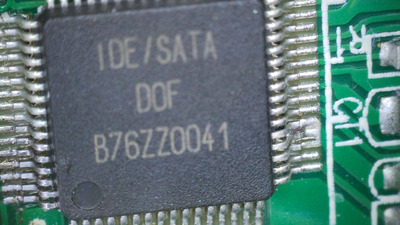First post, by squelch41
Hi,
I bought 2 SATA to IDE adapters on ebay which turned out to be defective (tried with 3 sata HDDs on 3 IDE motherboards in master and slave configs - no life).
Quality of manufacture is pretty terrrible as well.
I am debating rolling the dice again having got a refund but was wondeirng if people had good experiences with these or not?
I need one with master/slave selection as my 486 only has one IDE channel and on my p3, I only have one spare channel.
The (dead) ones I got have a chip as shown marked DOF B76ZZ0041 for which nothing comes up on google for datasheets etc.
Anyone had any good experiences with these adapters?
(want to go ide-sata as have some spare sata disks)
Thanks!
V4P895P3 VLB Motherboard AMD 486 133MHz
64mb RAM, CF 4Gb HDD,
Realtek 8019 ethernet + XT-IDE bios ROM, ES1869 soundcard, VLB Cirrus Logic GD5428 1mb VGA
440bx MSI 6119, modified slocket , Tualitin Celeron 1.2Ghz 256mb SD-RAM, CF 4GB HDD, FX5200 gfx

